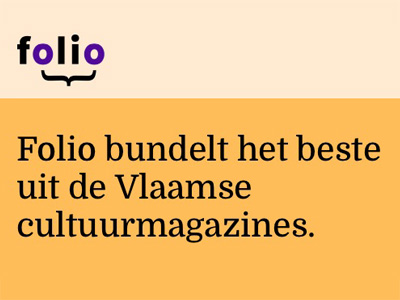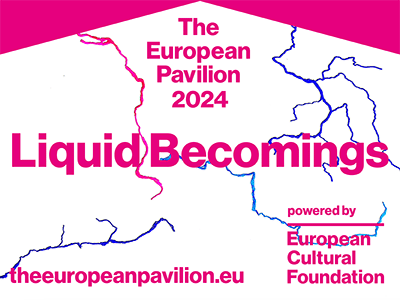Essays
-
Privaat kunstbezit
Notities over het kunstwerk als 'geschenk' en het probleem van het interieur
Bart Verschaffel -
Het kunstige interieur
Maarten Delbeke -
Het is klimmen of dalen, naargelang je komt of gaat. Als je vertrekt, gaat het naar beneden, maar als je aankomt, gaat het omhoog
Mariana Castillo Deball -
Kunst in een glijdend huis
Vaststellingen door hij en men
Dirk Lauwaert -
Kort zelfportret als (thuis)lezer
Eddy Bettens -
Home Improverment
Over het (Totes) Haus Ur van Gregor Schneider
Wouter Davidts -
Sculptuur in het laatvictoriaanse interieur
Martina Droth -
Een IJskast in Knokke
Willem Jan Neutelings -
Kunst als primaire relatie
Rudi Laermans -
Kasten en collectioneurs
Reesa Greenberg -
Al dat zwart. Over muziek in huis
Marc Kregting -
Kunst in het belaagde huis
Steven Jacobs -
Stylemeister
Dirk Pültau -
Onherbergzame kunst
Geert Bekaert -
Het Vlaams Belang en de vrijheid van meningsuiting: van een oxymoron gesproken
Koen Lemmens
Besprekingen
-
De-regulation with the work of Kutlug Ataman
Jeroen Peeters -
De subversieve charme van de bourgeoisie
Kees Keijer -
Eberhard Havekost. Harmonie. Bilder/Paintings 1998 – 2005
Daniëlle Hofmans -
Next Level. Art, Games & Reality
Maaike Lauwaert -
Los Angeles 1955 – 1985
Lieven Van Den Abeele -
Netherlands Now!
Steven Humblet -
Michelangelo Drawings, Closer to the Master
Dries Vande Velde -
Aanwinsten Fotomuseum Antwerpen
Steven Humblet
-
Dynamicity. Tactieken voor een veranderende metropool
Indira Van ’t Klooster
-
De architectuur van het geluk
Christophe Van Gerrewey

121
mei-juni 2006
Kunst in huis
Kunst in huis: wat is onmogelijker? De moderne kunst is toch nergens thuis? Dus in huizen al helemaal niet! In het tijdperk van de ‘museumkunst’ is ‘huiselijke kunst’ een contradictie. En toch: een groot, zoniet het grootste deel van de verkochte kunst komt finaal in de privé-sfeer terecht. Sommige mensen offeren hun hele huis aan de kunst op, met het gevaar dat zij als een spookachtig duplicaat van de tentoonstellingsbezoeker door hun woning schuifelen. Anderen stoppen de kunst weg in kastjes. Nog anderen – de meerderheid allicht – proberen met kunst te leven.
Dat lukt nooit helemaal; het kunstwerk blijft een vreemd ding. Bart Verschaffel suggereert een nieuw perspectief om die vreemdheid te vatten. Hij verbindt het kunstwerk met de kostbaarheid van het geschenk. Het geschenk is nooit ‘van ons’ omdat het naar zijn schenker blijft verwijzen. Die plaats van de schenker wordt bij het kunstwerk ingenomen door de kunstenaar; het fecit van de kunstenaar zorgt ervoor dat het kunstwerk nooit ‘van ons’ wordt en dus niet thuiskomt in ons huis. We kunnen er wel aan gehecht raken, maar die intimiteit is altijd ‘te groot’; alsof niet wij het kunstwerk bezitten, maar het kunstwerk ons bezit.
Dirk Lauwaert verkent het thema ‘kunst in huis’ vanuit de herinnering, door na te gaan hoe zijn familie haar leven vormgaf met kunst en esthetische referenties. De bijdrage van Mariana Castillo Deball laat uiteenlopende (bezits)logica’s rond het ‘kostbare’ met elkaar botsen. Mexicaanse dorpelingen beleven het weghalen van archeologische vondsten als ontregelend – voor hen heeft ‘bezit’ nog iets van ‘bezetenheid’. Maar ze zijn modern genoeg om ook de materiële verliespost in te schatten. Deball doorkruist het relaas van één ‘ontvreemding’ met het mercantiele ‘goede smaak’-vertoog van Amsterdamse antiekhandelaars.
In twee bijdragen gaat de kunstenaar in en mét het huis aan de slag. Het contrast is wel groot: Martina Droth onderzoekt hoe Britse laatvictoriaanse kleinsculpturen mee vormgaven aan een idiosyncratisch model voor hoogwaardig leven met kunst in huis; Wouter Davidts belicht de neoproletarische versmelting van huis en atelier in het werk van de hardwerkende kunstenaar Gregor Schneider. Daarnaast worden twee fictieve modellen van ‘leven met kunst in huis’ belicht: Steven Jacobs introduceert een memorandum van Alfred Hitchcock over twee interieurs in The Birds (1963); Dirk Pültau bezoekt het interieur van San Ming in een tentoonstellingsruimte te Maastricht. Ook andere kunsten komen aan bod: muziek in huis (Marc Kregting) en – de evidentie zelve – het boek (Eddy Bettens).
Kunst in huis is een private zaak. Dit nummer begon dan ook met een praktisch probleem: hoe het private zichtbaar en dus bespreekbaar maken. Eerst hadden we empirisch materiaal nodig. Charlotte Lybeer gaf alvast een nieuwe dimensie aan het begrip ‘huisfotograaf’; ze ging op bezoek bij een twintigtal verzamelaars en kunstliefhebbers om hun ‘leven met kunst in huis’ te documenteren. Een keuze uit die beelden werd naar zes auteurs gestuurd met, naast de reeds genoemde Bart Verschaffel, ook Geert Bekaert, Maarten Delbeke, Reesa Greenberg, Rudi Laermans en Willem Jan Neutelings. Dit gedeelte – zes teksten in totaal – kwam tot stand in samenwerking met Wouter Davidts die – naast Bart Verschaffel en de fotografe – ook mee de beeldselectie bepaalde. Een klein aantal beelden werd afgedrukt in kleur (als bijlage bij dit nummer). De (anonieme) verzamelaars en kunstliefhebbers willen we van harte danken voor hun openheid en gastvrijheid.
Ten slotte in onze reeks over het VB: Koen Lemmens toetst de juridische notie ‘vrije meningsuiting’ aan het dubieuze gebruik van dit concept door het VB.







